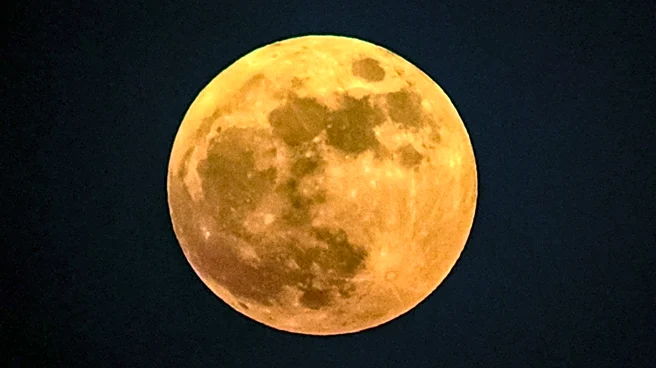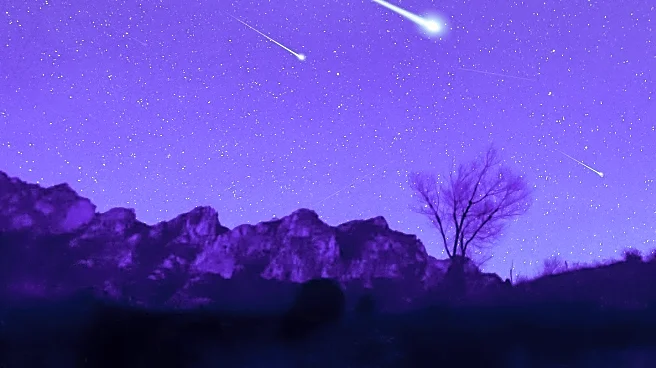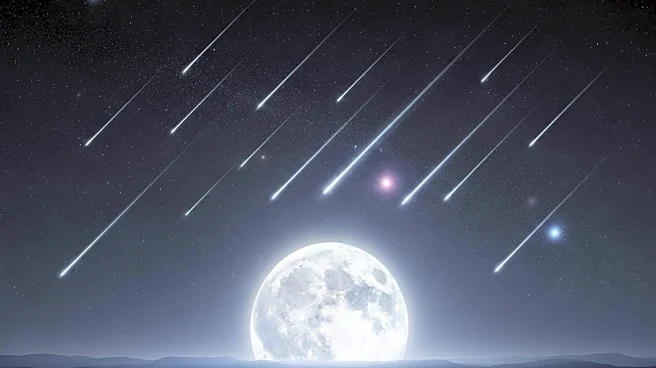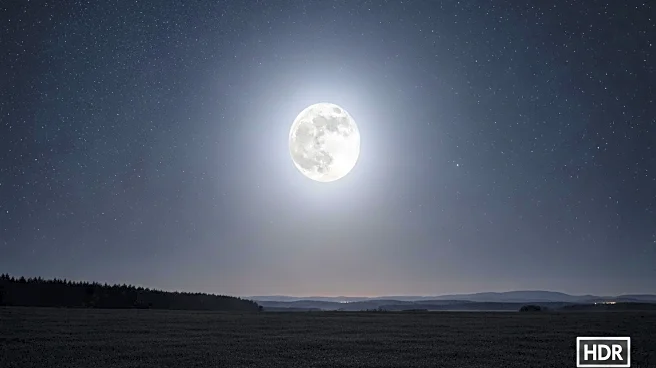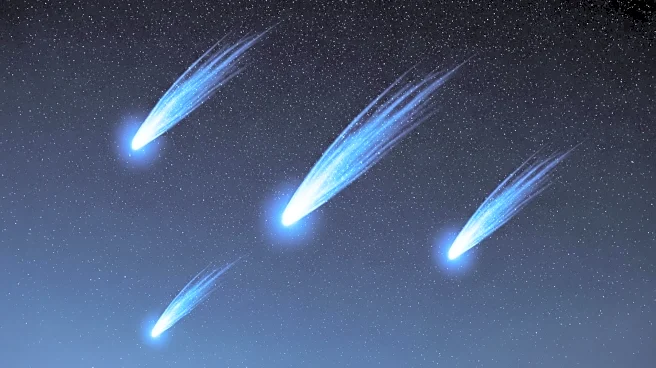What's Happening?
Astronomers have announced that the next four months will feature a series of four supermoons, providing a unique opportunity for moon enthusiasts. These supermoons include the Hunter’s moon in October, the Beaver moon in November, the Cold moon in December, and the Wolf moon in January. A supermoon occurs when a full moon coincides with the moon's closest approach to Earth in its elliptical orbit, making it appear up to 8% larger and 15% brighter than a typical full moon. The closest of these supermoons will occur in November, although the difference in size and brightness compared to the others may not be noticeable to the naked eye. The best time to observe a supermoon is when it is near the horizon, as it appears larger compared to nearby objects.
Why It's Important?
The occurrence of four consecutive supermoons is a rare astronomical event that captivates both amateur and professional astronomers. This series of supermoons provides an excellent opportunity for educational outreach and public engagement with astronomy. It allows individuals to observe and appreciate celestial phenomena, potentially sparking interest in space science and exploration. Additionally, such events can boost local economies through increased tourism, as people travel to areas with optimal viewing conditions. The supermoons also offer a chance for scientific study, as astronomers can gather data on the moon's surface and its interaction with Earth's atmosphere.
What's Next?
As the supermoons approach, astronomers and skywatchers are preparing for optimal viewing conditions. Public observatories and astronomy clubs may organize events to facilitate community engagement and education. The first supermoon will occur on October 7, and subsequent supermoons will follow monthly. Observers are encouraged to use binoculars or telescopes for a more detailed view, especially when the moon is near other celestial bodies like the Pleiades star cluster or the planet Jupiter. These events may also inspire further research into lunar phenomena and their effects on Earth.


